You’ve spent hours cleaning your home, but something still feels off. Despite your best efforts, visitors might walk in and sense a lingering messiness that you can’t quite identify. The culprit? Small habits that create visual chaos without you realizing it. These sneaky clutter-creators can undermine even the most thorough cleaning session, making your space feel disorganized when it’s technically clean.
1. Leaving Mail, Paperwork, or Magazines Out
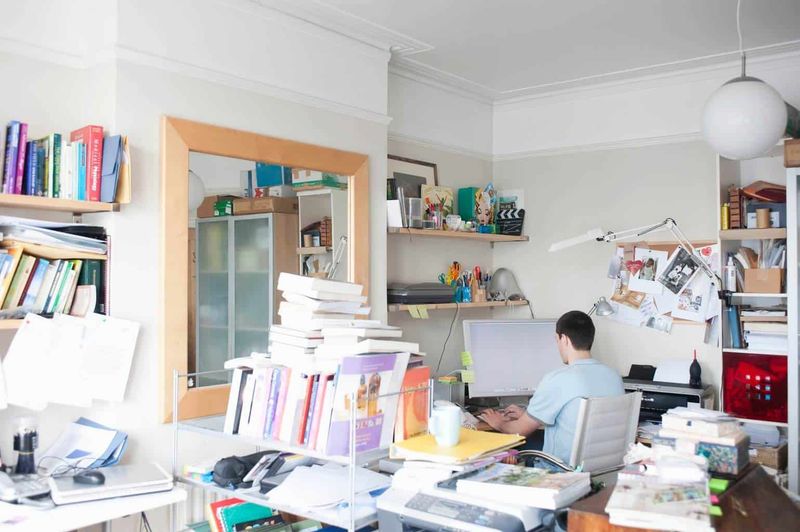
Those innocent-looking envelopes scattered across your coffee table are silent clutter culprits. Even just three or four pieces of mail can visually pollute a spotless room, instantly communicating disorganization to anyone who enters.
The problem multiplies with magazines and catalogs, whose colorful covers draw attention away from your carefully curated decor. Our brains process this paper pile as unfinished business – tasks waiting to be handled.
Try creating a single designated inbox for incoming paper items, preferably in a drawer or attractive container. Process mail daily, immediately recycling junk and filing important documents. This five-minute habit eliminates one of the most common sources of visual noise in otherwise tidy homes.
2. Too Many Small Décor Items
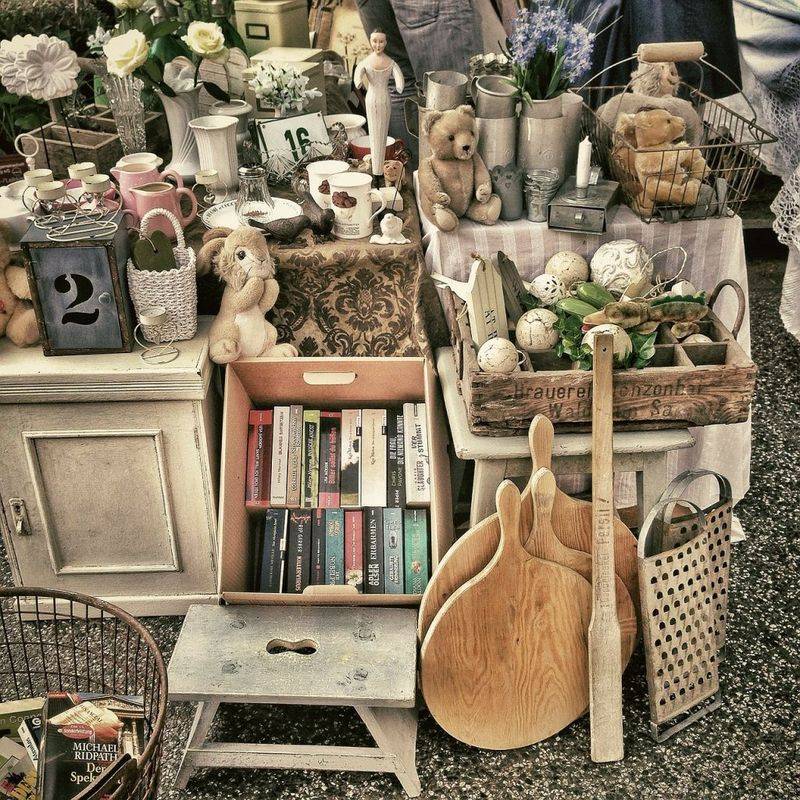
Each little figurine tells a story – your vacation souvenirs, gifted knickknacks, and collected treasures. The problem isn’t the individual items but their cumulative visual weight when displayed all at once.
Psychologists call this phenomenon ‘visual noise’ – when too many small objects compete for attention, our brains work overtime processing the information. The result? A room that feels busy and unsettling even when dust-free and organized.
Consider rotating your treasures seasonally instead of displaying everything simultaneously. Store half your decorative pieces and swap them quarterly. This approach preserves your emotional connections while creating visual breathing room. Remember that negative space – areas intentionally left empty – creates calm and balance in interior design.
3. Visible Cords and Chargers
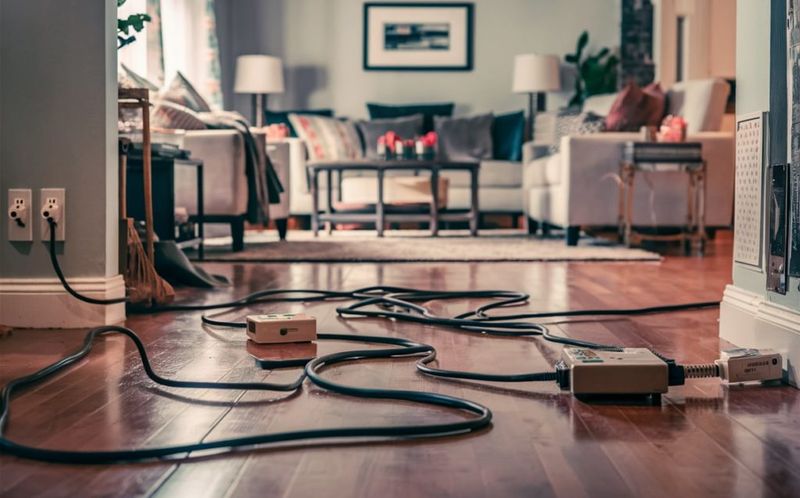
Modern living comes with a tangle of electronic tentacles that can strangle your decor dreams. A snake pit of black cords beneath your entertainment center broadcasts ‘mess’ even when there’s not a speck of dust in sight.
The contrast between sleek devices and their chaotic connections creates visual discord. Our eyes naturally follow lines, so dangling cords literally lead our attention away from your intentional design choices.
Simple cord management solutions like cable clips, cord covers, or fabric sleeves can transform this electronic eyesore. Consider furniture with built-in cable management or strategic placement near outlets. For charging stations, dedicated boxes with cord slots keep necessary cables accessible but contained. These small adjustments create a more intentional, polished look without sacrificing functionality.
4. Shoes Scattered at the Door
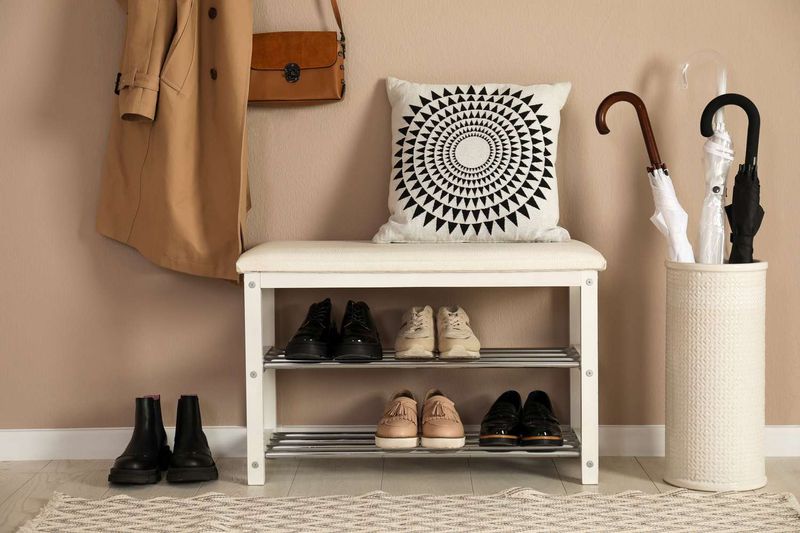
The entryway sets the tone for your entire home, acting as a transition between outside chaos and interior calm. A jumble of footwear by the door creates an immediate impression of disorder, regardless of how pristine the rest of your space might be.
Footwear collects dirt, scuffs, and weather marks that read as ‘messy’ even when arranged in pairs. The varied heights, colors, and styles create visual inconsistency that registers subconsciously as clutter.
A dedicated shoe cabinet with doors keeps footwear accessible but invisible. For open storage, limit visible pairs to 3-4 and use matching containers or a uniform rack system. Establish a family rule about which shoes stay out versus which get stored away. This simple boundary creates a welcoming entry that properly introduces your well-kept home.
5. Unmade Beds
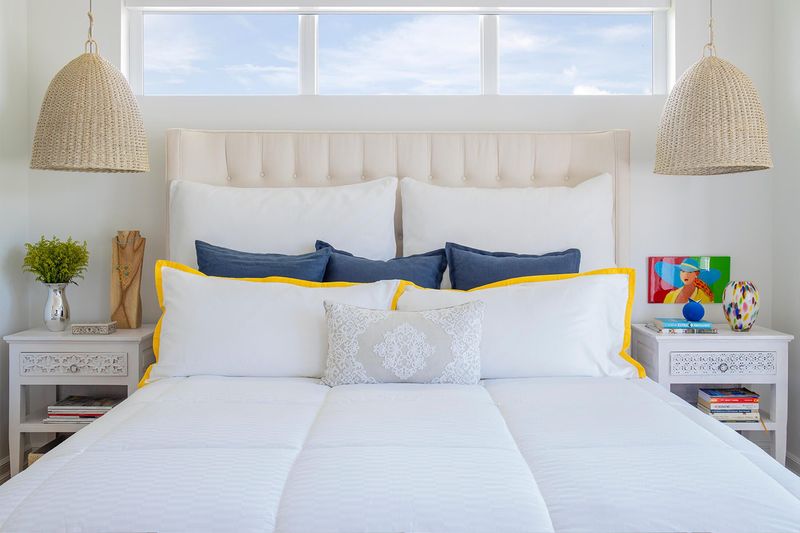
A rumpled bed dominates bedroom visuals like a billboard advertising disorder. The contrast between smooth, flat surfaces elsewhere and the chaotic landscape of twisted sheets creates an immediate impression of messiness that overrides all other cleaning efforts.
Bedding typically occupies the largest continuous surface area in bedrooms. When left unmade, the eye naturally gravitates toward this disruption rather than registering the organized closet or spotless floor.
Morning bed-making doesn’t require hospital corners or decorative pillows – even a simple straightening of covers creates visual order. Try the one-minute method: pull the comforter up, quickly arrange pillows, and smooth major wrinkles. This minimal effort delivers maximum impact, instantly elevating the room’s appearance from neglected to intentional without adding significant time to your morning routine.
6. Overflowing Open Shelves

Open shelving promised airy, magazine-worthy displays, but reality often delivers visual overload instead. Books crammed horizontally atop vertical rows, decorative items crowding every inch, and mismatched storage containers create a busy backdrop that registers as disorderly.
The human eye seeks patterns and breathing room. When shelves lack negative space, our brains process the visual information as cluttered, regardless of how clean or organized the items might be.
The solution isn’t necessarily fewer possessions but more thoughtful arrangement. Aim for 25-30% empty space on each shelf. Group similar items together, varying heights and textures while maintaining color harmony. Consider backing shelves with subtle wallpaper to create a cohesive background. These simple styling principles transform stuffed shelves from chaotic to curated without sacrificing the items you love.
7. Using Surfaces as Dumping Grounds

Flat surfaces exert an almost magnetic pull on our daily belongings. Keys, sunglasses, receipts, and half-empty water bottles gradually colonize countertops and tables throughout the week, creating islands of random objects.
These temporary landing spots quickly become permanent clutter zones. The randomness of these collections – unrelated items grouped only by circumstance – creates visual chaos that reads as messiness even when the items themselves are clean and the surfaces dust-free.
Creating dedicated homes for everyday items prevents this surface sprawl. A small tray corrals keys and sunglasses by the door. Designated charging stations keep devices contained. Wall-mounted organizers move items off horizontal surfaces entirely. By establishing specific destinations for daily essentials, you interrupt the habit of absent-minded placement that gradually transforms clear surfaces into cluttered catchalls.
8. Too Many Throw Pillows or Blankets
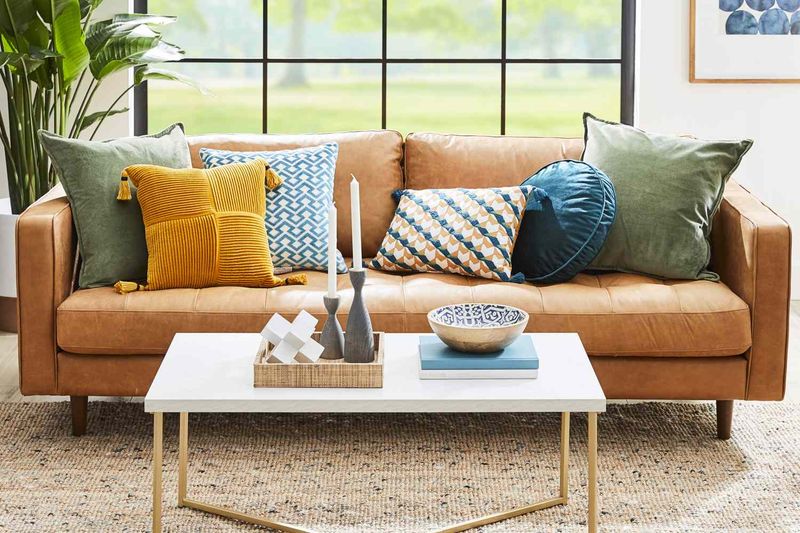
The cozy revolution has led to pillow proliferation in many homes. What starts as a few accent pieces often multiplies into a mountain of cushions that must be removed before sitting down. These textile towers create visual weight that reads as clutter.
Blankets present similar challenges when draped haphazardly or stacked in piles. Even clean, high-quality throws can appear messy when not intentionally arranged. The soft, malleable nature of these items means they rarely maintain crisp, orderly shapes.
Quality trumps quantity with soft furnishings. Select 2-3 statement pillows rather than six matching ones. Choose one luxurious throw displayed purposefully rather than several stacked in corners. When not in use, store extra blankets in a dedicated basket or ottoman. This restrained approach maintains comfort while eliminating the stuffed-furniture look that undermines your cleaning efforts.
9. Unorganized Fridge or Pantry Fronts
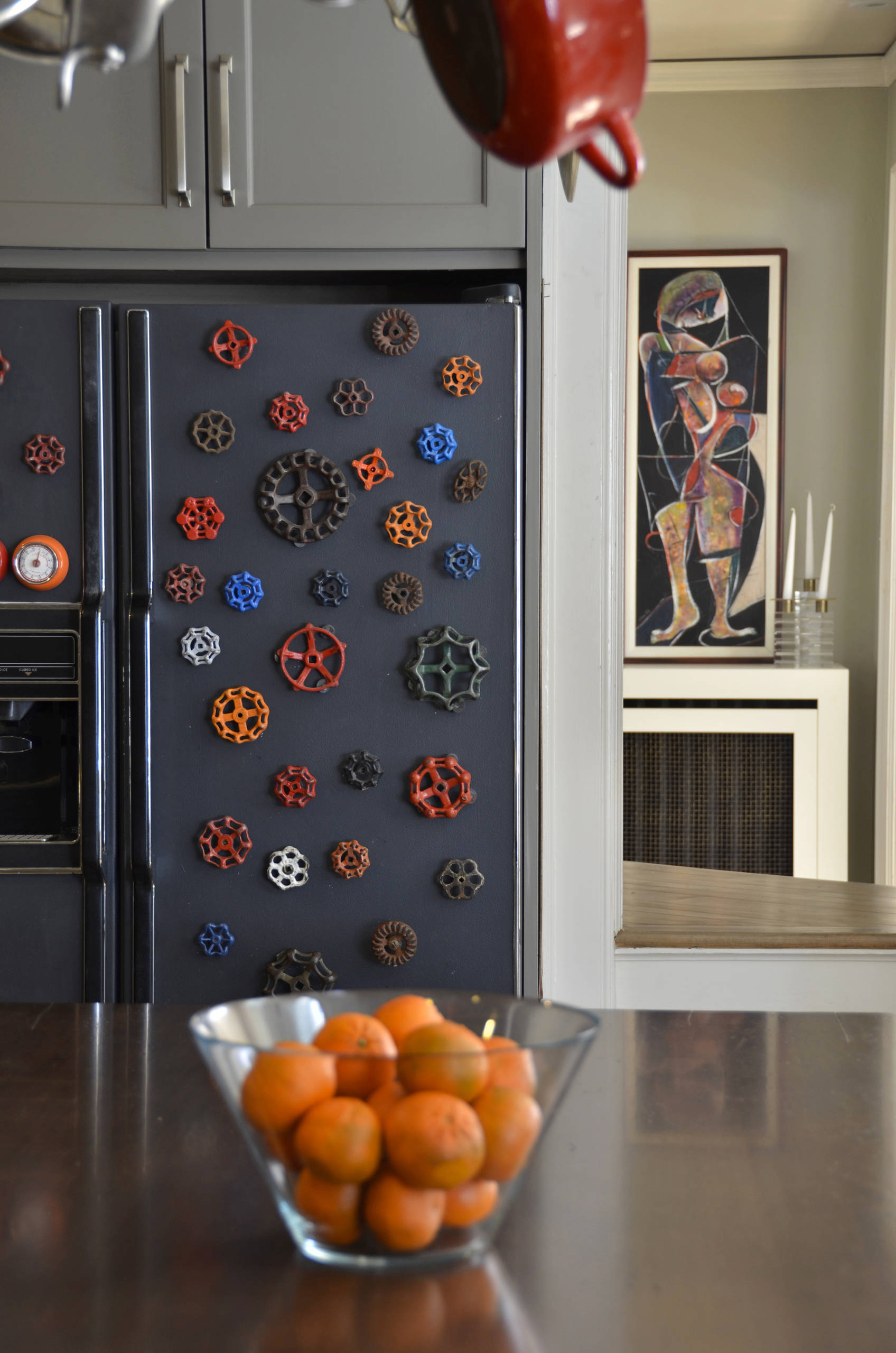
Refrigerator doors often become family command centers covered with appointment reminders, children’s artwork, and takeout menus. This paper patchwork creates a focal point of disorder in otherwise tidy kitchens.
Pantry doors suffer similarly when overloaded with shopping lists and coupon collections. The vertical nature of these surfaces makes their clutter particularly visible from multiple angles throughout the kitchen and adjacent rooms.
Consider relocating this information hub to a less prominent location like inside a cabinet door or dedicated command center. If refrigerator displays are important to your family, try containing them with magnetic frames or a single bulletin board that creates visual boundaries. For truly minimalist results, photograph meaningful artwork before recycling it, creating a digital album that preserves memories without the visual noise.
10. Not Folding or Hanging Clothes Immediately
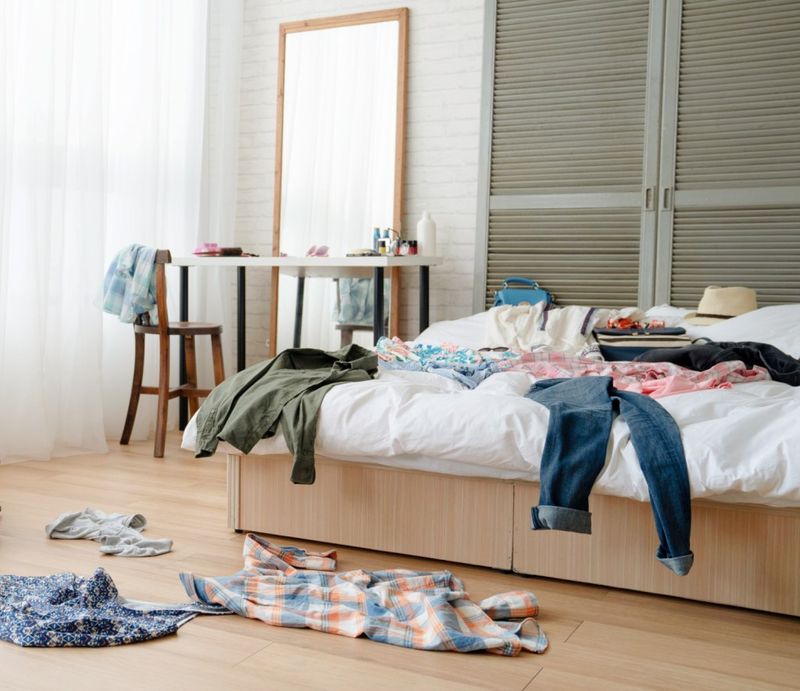
The clean laundry pile is a fascinating paradox – technically clean items creating visibly messy spaces. That basket of freshly washed clothes sitting in your bedroom corner sends contradictory signals: the contents are clean but the presentation reads as clutter.
Wrinkled garments draped over chairs or stacked on surfaces create soft, irregular shapes that disrupt visual order. Even when confined to a basket, the misaligned edges and mixed colors create an impression of disorganization that undermines other tidying efforts.
Try the two-minute rule: if putting away a load takes less than two minutes (which it often does), do it immediately. For busy households, consider smaller, more frequent loads that don’t overwhelm your folding motivation. Alternatively, fold directly from the dryer when wrinkles haven’t set in. These small habit adjustments eliminate one of the most common sources of “clean clutter” in bedrooms.
11. Tangled Jewelry or Accessories on Display
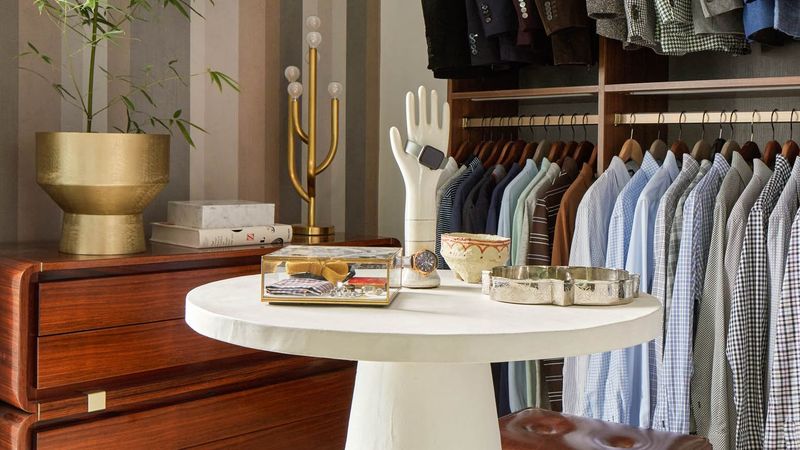
Your grandmother’s vintage necklace deserves better than being jumbled with costume pieces in a ceramic dish. Jewelry naturally creates visual complexity through varied shapes, materials, and colors – when displayed haphazardly, this complexity reads as chaos.
Necklaces tangle mysteriously overnight, creating metallic knots that instantly communicate disorder. Earrings separated from their partners suggest disorganization even when surrounded by pristine surfaces.
Dedicated jewelry storage brings order to accessory collections without hiding treasured pieces. Consider wall-mounted organizers that transform necklaces into decorative displays while preventing tangles. Compartmentalized trays separate earring pairs and categorize similar items. For minimal visual impact, select organizers in colors that blend with your decor. These solutions maintain accessibility while eliminating the “jewelry jumble” that makes vanities appear cluttered despite regular cleaning.
12. Cluttered Bathroom Counters
Morning routines often leave a trail of bottles, tubes, and tools across bathroom surfaces. The high contrast between sleek countertops and the forest of products creates immediate visual discord in an otherwise spotless space.
Bathroom products typically feature bright packaging designed to stand out on store shelves – unfortunately, this marketing strategy creates visual noise in home settings. The varied heights, colors, and shapes fight for attention, creating an impression of messiness even when perfectly aligned.
Consider decanting everyday products into matching containers for a spa-like aesthetic. Store occasionally-used items in drawers or cabinets. For essential countertop items, corral them on an attractive tray that visually unifies disparate objects. Even without changing your product lineup, these simple containment strategies transform visual chaos into intentional groupings that complement rather than compete with your clean bathroom surfaces.
13. Inconsistent Storage Solutions
The plastic bin beside the wicker basket next to the cardboard box creates a visual patchwork that reads as disorganized, regardless of how neatly the contents are arranged. Storage mismatches signal improvisation rather than intention, undermining the sense of order you’ve worked to create.
Different materials, colors, and styles interrupt visual flow, creating unnecessary complexity that registers as cluttered. Our brains naturally seek patterns – when storage containers lack cohesion, we perceive the space as less organized than it actually is.
Invest gradually in coordinated storage that suits your aesthetic. Clear containers work well for frequently accessed items, while matching fabric bins soften visual impact for less-used belongings. For budget-friendly coordination, spray paint mismatched baskets a single color or cover cardboard boxes in consistent wrapping paper. This visual harmony creates an immediate impression of organization, even if the underlying sorting system remains exactly the same.

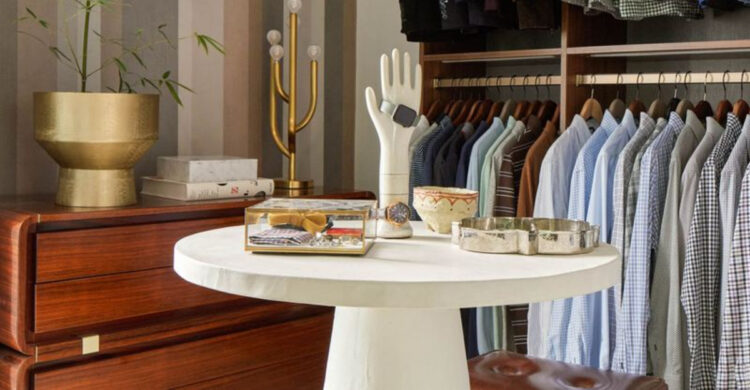


Comments
Loading…